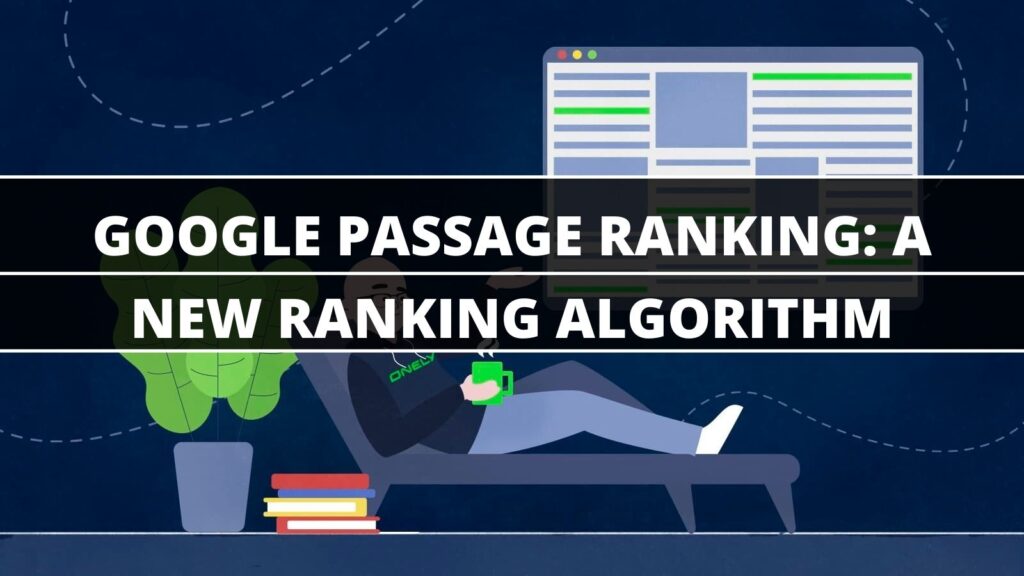
In today’s content-rich web, users often need exact answers fast. Traditional page-based ranking can overlook valuable information buried deep in long-form articles. That’s why Google introduced Google Passage Ranking, designed to surface relevant passages from within pages, even when the full page isn’t primarily about that topic. At DigiSwarm, we guide businesses through these algorithm shifts, ensuring their content is structured for maximum visibility and impact.
This advanced ranking method assesses not just webpages but individual paragraphs or blocks. It looks at quality signals both for the page overall and for specific sections. For content strategists and SEO professionals, embracing Google Passage Ranking means rethinking how information is presented: clarity, sectioning, and contextual relevance matter more than ever.
Understanding this algorithm shift is crucial. For publishers, it’s a path to improved impressions, clicks, and user satisfaction. For marketers, it’s an opportunity to create content that’s not only engaging but inherently discoverable through intelligent structure and semantic optimization.
The Evolution of Passage Ranking
Google’s transition to passage-level indexing addresses longstanding user behavior trends. People frequently land on deeply nested content through long-tail keyword queries. Previously, such content was often overlooked. Google Passage Ranking solves this by evaluating passages independently of the page’s main theme and by giving appropriate weight to highly relevant sections.
First announced in 2020, this signal now positively impacts approximately 7% of queries across all languages and regions. That may seem modest, but the practical effect is significant: niche questions, how-tos, and specific fact-based queries now have a better chance of surfacing results—even from general-topic pages—as Google can pinpoint the exact portion of content that best answers user intent.
How Passage Ranking Works under the Hood
1. Content Segmentation:
Google’s crawler breaks down long-form pages into smaller semantic passages—typically 50–60 words—based on factors like headings and sentence structure.
2. Independent Scoring
These passages are evaluated separately for relevance to a specific query.
-
A passage can rank even if the overall page does not strongly match the search intent.
3. Blend of Signals
Google merges page-level signals (site authority, backlinks, page-level SEO) with passage-level relevance (keyword focus, clarity, context). High scores in any area influence ranking.
4. Responsive Results
If a specific passage excels in relevance, but the full page is about a related topic, the result still appears higher in search results, with the passage highlighted under the meta description.
Thus, Google Passage Ranking favors well-structured, specific, context-rich writing that stands on its own on a larger page.
Why It Matters for SEO and Content Strategy
Unlock More Rankings from Existing Content
Previously, pages needed to be entirely focused on one topic. Now, several high-value passages can rank independently. A single page can generate multiple entry points for varied audiences.
Boost Visibility for Niche Queries
Long-tail or specific queries referring to facts, steps, or troubleshooting now have a better chance of securing high-ranking spots if the content is clearly organized.
Enhance Featured Snippet Potential
Passages that directly answer user questions have a higher likelihood of being used in featured snippets or answer boxes.
The reward for Structure and Clarity
Content that’s properly sectioned, with clear headings and self-contained paragraphs, becomes more searchable and valuable.
Time-Saving Authority
Rather than creating dozens of specialized landing pages, a single comprehensive guide can rank for many queries, saving time and effort.
Crafting Content for Passage Indexing
Use Descriptive Headings: Employ clear H2s/H3s—like “How to Set Passage-Friendly Content” or “Benefits of Passage Ranking”—rather than vague labels.
Write Self-Contained Paragraphs: Ensure each paragraph carries a single, coherent idea. Readers and crawlers should grasp its context without relying on surrounding text.
Segment with Lists and Tables: Formatted blocks—such as bullet points, checklists, or tables—often stand out as easy-to-index passages due to clarity and structure.
Include Targeted Keywords Naturally: Place long-tail search terms in headings and at the beginning of passages to reinforce intent alignment.
Answer a Single Question Per Section: Divide content into micro-topics, each addressing a specific question or problem directly.
Keep Passage Length Concise: While not mandated, passages around 50–60 words balance readability and indexing clarity, Google Passage Ranking
Technical Best Practices for SEO Alignment
Structured Data Implementation: Markup with FAQPage and HowTo Schemas can reinforce the content structure and help Google identify query-specific passages.
Internal Linking: Link anchor text to specific sections using jump links or anchor IDs—this signals relevance and context.
Optimized Meta & Title Tags: Ensure they align with your targeted keywords so that the right passage is previewed in SERPs.
Fast Load Times: CSS and JS should be optimized so passages are visible and not deferred. Lazy-load images below the fold only, Google Passage Ranking.
Responsive Design: Passages should display properly on mobile, as Google primarily uses mobile-first indexing for passage ranking.
Performance Tracking & Optimization
Use Google Search Console to identify pages where passage ranking might be contributing to impressions or clicks. Look for queries tied to specific passages—document those changes and adjust content or headings accordingly, Google Passage Ranking.
Monitor performance trends post-optimization—if titles and headings are improved, expect enhanced CTR and session duration. Track both page-level and query-level analytics to capture the full impact.
Reassess content monthly:
Update outdated passages
Add new semantically related sections
Improve readability and structure
Case Study: Technical Documentation Wins
A SaaS company specializing in dev tools saw its support docs gain traction when optimized for Google Passage Ranking. By restructuring guides with clear headings (“How to fix API auth errors”) and short, contextual passages, they achieved Google Passage Ranking:
-
30% increase in impressions
-
22% increase in clicks
-
Better visibility in long-tail queries
This example at DigiSwarm demonstrates how passage-first structuring reinforces authority without diluting broader content.
The Broader SEO Landscape: Passage Ranking and Beyond
Passage ranking complements other advanced search features:
-
Featured Snippets extract well-formatted answer passages
-
People Also Ask (PAA) boxes depend on well-structured content
-
AI summarization, like Google’s generative preview, leverages rich passages
By aligning copy with a passage-friendly structure, content increases its chances of inclusion in multiple SERP features, maximizing visibility in Google Passage Ranking.

Conclusion: Structure for Passage, Rank for Precision
As Google refines its search capabilities with passage-level ranking, content creators face a challenge—and opportunity. A well-organized, clearly segmented article is no longer optional—it’s game-changing. Emphasizing Google Passage Ranking in content strategy offers exponential reach across queries, better user engagement, and stronger SEO ROI.
At DigiSwarm, we integrate passage-optimized content strategies into holistic SEO and digital marketing plans. Our team ensures your pages aren’t just technically sound but strategically engineered for visibility and depth. For businesses looking to collaborate with the best digital marketing firm in Dehradun, trust DigiSwarm to elevate your content, one passage at a time.

